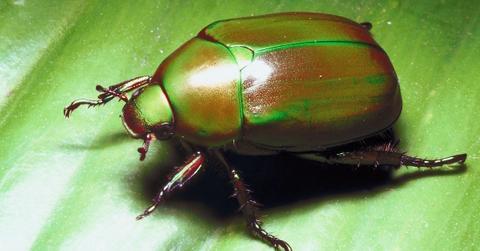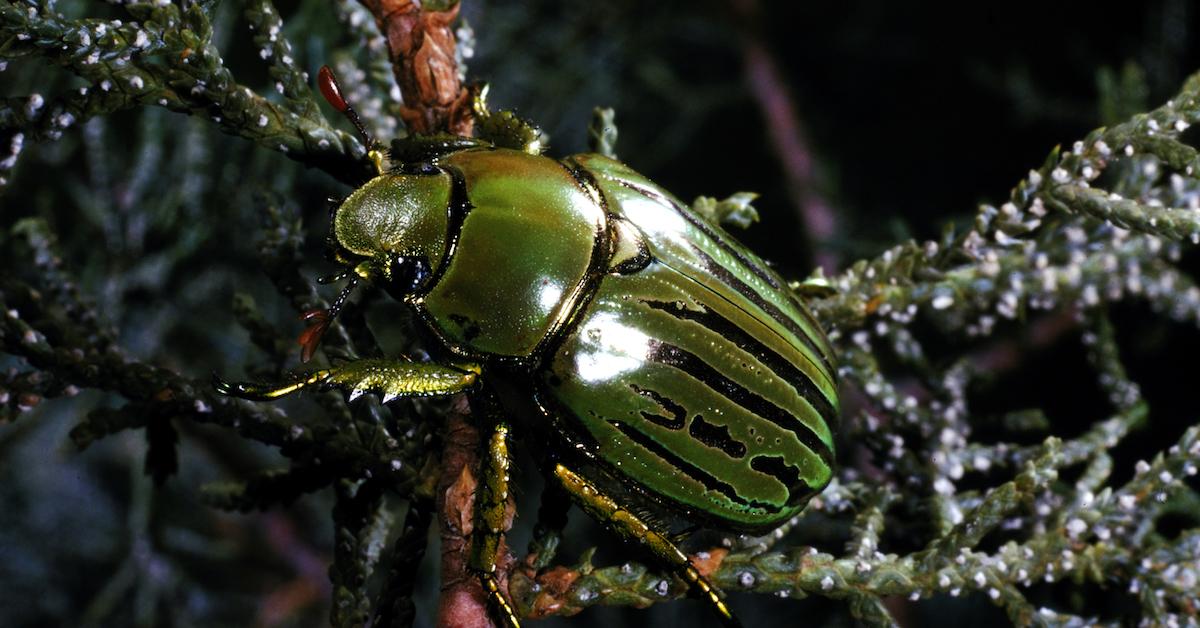How to Get Rid of Japanese Beetles
Published Feb. 26 2021, 12:48 p.m. ET

Japanese beetles are tiny, shimmering insects that, while beautiful, are far more threatening than you might think, at least in terms of your garden health. These jewel-like bugs are an invasive species, well-known for leaving chewed rosebuds and half-eaten leaves in their wake. They are one of the Eastern and Midwestern U.S.’s most problematic pests, and if they’re in your yard, it’ll be imperative that you learn how to get rid of Japanese beetles as soon as possible — without anything toxic.

What are Japanese beetles?
According to the Old Farmer’s Almanac, Japanese beetles first made their way into the U.S. in the early 1900s. Before then, these buggy beauties could only be found in Japan, where their island isolation and natural predators kept them in check. Once they got here, however, that all changed.
Japanese beetles can be identified by their shiny, metallic-green bodies and copper-colored wing covers. Adults grow to about three-eighths of an inch long and one-quarter of an inch wide, and can survive for around 40 days before their lifespan runs out. And they can do an awful lot of damage in those 40 days.
How to get rid of Japanese beetles:
Many entomological experts agree that these beetles can be removed via the usual methods: drop cloths, traps, geraniums, natural insecticides like neem oil, and the like. Keep reading to find out the best practices for eliminating these illicit insects.
Handpicking
The folks at Pests all agree that one of the most effective methods for getting rid of Japanese beetles is picking them off one by one. Japanese beetles are known for being slow and rather sluggish insects. They don’t really bite and they are particularly easy to spot while they are gnawing on our garden veggies and flowers, so picking them up and throwing them in a bucket of soapy water is an effective way to euthanize them and return them to the earth.
When the bugs in the bucket have expired, simply dump the soapy water onto your lawn. Birds and other predators should make short work of the beetles by the next morning. Try to catch beetles in the early morning, when they are far less active.
Row covers
The Old Farmer’s Almanac also suggests using row covers on your garden during the beetles’ expansive six-to-eight-week feeding period that runs from mid to late May in the southern U.S. and in mid to late June in the North. Note that while the row covers will keep the beetles out, they will also keep out pollinators, so they’ll have to be removed if your crops need to be pollinated.
Geraniums
According to the Big Blog Of Gardening, Japanese beetles love geraniums. Not only are they drawn to them like flies to… well, you know, but eating the flowers actually places the beetles into a narcotic state for the next 12 to 18 hours. Once in this state, they’ll be easy pickin’ for you and for any garden predators.
Even better, some beetles become so intent on eating the drug-inducing flowers that they expire from it. Note that planting the geraniums near your garden flowers is not the idea here. You’ll want to put them somewhere away from your prized rose bushes and vegetable patch. The geraniums should give the beetles something else to occupy their time while you contemplate their demise.

Neem oil or insecticide
There are many homemade soap-and-water insecticides that will take care of Japanese beetles, but depending on the concentration of the ingredients, these solutions also run the risk of damaging plant leaves. According to Gardeners, the greenest “chemical” option for getting rid of Japanese beetles is something called neem oil.
Not only does this evergreen oil compound keep the beetles at bay, but it also controls other garden pests like slugs, thrips, grasshoppers, crickets, and spider mites.
Traps
The last suggestion comes from the pages of the Old Farmer’s Almanac. Japanese beetles are attracted to the smell of eugenol and geraniol, aromatic chemicals extracted from plants, like the aforementioned geranium. There are many Japanese beetle traps on the market that use these compounds, but few are powerful or attractive enough to deter most adult beetles.
Luckily, an open can of fruit cocktail that is allowed to ferment, then placed precariously on top of bricks in a light-colored, half-filled pail of water, could be the perfect DIY trap for attracting and drowning Japanese beetles. If the bait is diluted by rain or stops being attractive to bugs, just open another can of fruit cocktail.
As you can see, there are many different ways to get rid of Japanese beetles than don’t involve using any chemical sprays or toxic insecticides. All you need is patience, a few geraniums, and a quick hand.